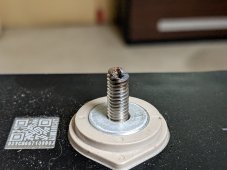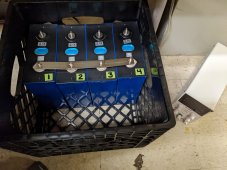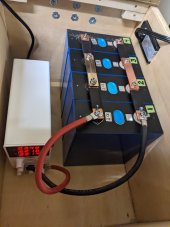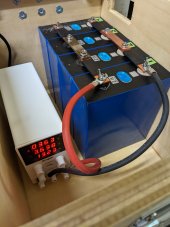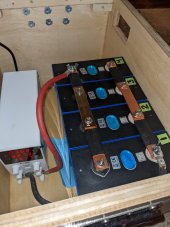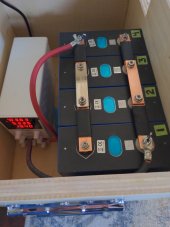tjoiner1986
New Member
Van lifer here.
A few months ago, my 100 Ah AGM battery began failing -- only getting about half the capacity that I used to. Rather than drop $200 on a replacement, I took the plunge and began making the transition to a 280 Ah LiFePo bank made from EVE cells with a 120A Daly Smart BMS (Bluetooth, UART, etc.), all from AliExpress. I'm running two 12V 100W panels through an EPEVER Triron 2210N (20A MPPT). I'm considering replacing that charge controller with the 30A MPPT/charger from Renogy so I can have the alternator charge my battery bank at night or on rainy days.
Currently, I'm waiting for ring terminals and Kapton tape to arrive (should be today) so I can connect the BMS and bind the battery cells together. Yes, I'm aware of compression/fixture and the various methods and opinions people have regarding it.
I have not attempted top balancing as I've read conflicting reports on whether it's necessary or not. And I'd rather not drop $70-80 on a power supply I'll only use once. Ultimately, I will probably do it anyway just for peace of mind.
All of the components I'll need -- breakers, wire, etc. -- are in my Amazon cart EXCEPT the inverter. I'm torn between the Giandel 1200w pure sine and the Renogy 1000w. I'm leaning toward the Giandel due to it's smaller size being able to fit inside the milk crate.
Oh yeah, this is a milk crate build. I already have the crate but I'm thinking of building a plywood box roughly the same 12" width of the crate but about 18" long since the crate, along with the plywood cover I made for it, currently doubles as a tabletop and food prep surface.
I guess my reason for this post is just to document the progress and to get feedback. Being new to LiFePo, I'm certain there are things I'm missing or not understanding entirely.
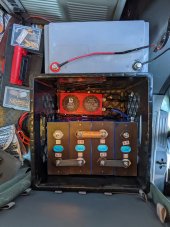
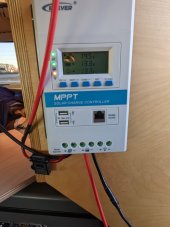

A few months ago, my 100 Ah AGM battery began failing -- only getting about half the capacity that I used to. Rather than drop $200 on a replacement, I took the plunge and began making the transition to a 280 Ah LiFePo bank made from EVE cells with a 120A Daly Smart BMS (Bluetooth, UART, etc.), all from AliExpress. I'm running two 12V 100W panels through an EPEVER Triron 2210N (20A MPPT). I'm considering replacing that charge controller with the 30A MPPT/charger from Renogy so I can have the alternator charge my battery bank at night or on rainy days.
Currently, I'm waiting for ring terminals and Kapton tape to arrive (should be today) so I can connect the BMS and bind the battery cells together. Yes, I'm aware of compression/fixture and the various methods and opinions people have regarding it.
I have not attempted top balancing as I've read conflicting reports on whether it's necessary or not. And I'd rather not drop $70-80 on a power supply I'll only use once. Ultimately, I will probably do it anyway just for peace of mind.
All of the components I'll need -- breakers, wire, etc. -- are in my Amazon cart EXCEPT the inverter. I'm torn between the Giandel 1200w pure sine and the Renogy 1000w. I'm leaning toward the Giandel due to it's smaller size being able to fit inside the milk crate.
Oh yeah, this is a milk crate build. I already have the crate but I'm thinking of building a plywood box roughly the same 12" width of the crate but about 18" long since the crate, along with the plywood cover I made for it, currently doubles as a tabletop and food prep surface.
I guess my reason for this post is just to document the progress and to get feedback. Being new to LiFePo, I'm certain there are things I'm missing or not understanding entirely.






